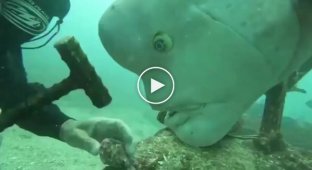Largemouth wrasse: a strange fish that is hard to forget (9 photos)
The largemouth wrasse is a fish with a truly unique mouthparts. When catching prey, the fish can extend its jaws forward by as much as 65% of the length of its head. 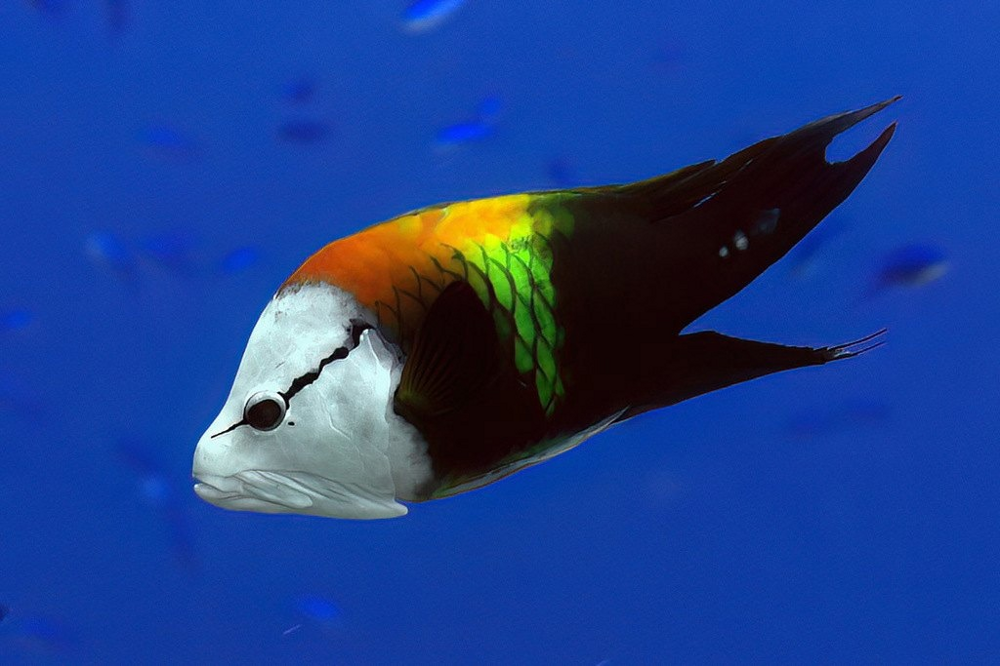
The largemouth wrasse, or sling wrasse, is a prominent member of the ray-finned fish family of the wrasse family. Among the other 500-odd species of the family, distinguishing our heroes may be difficult at first. Males choose a modest gray-brown-yellow coloration, while females dress up in monochrome bright yellow or strict brown colors. But color can change depending on age, lighting and gender. 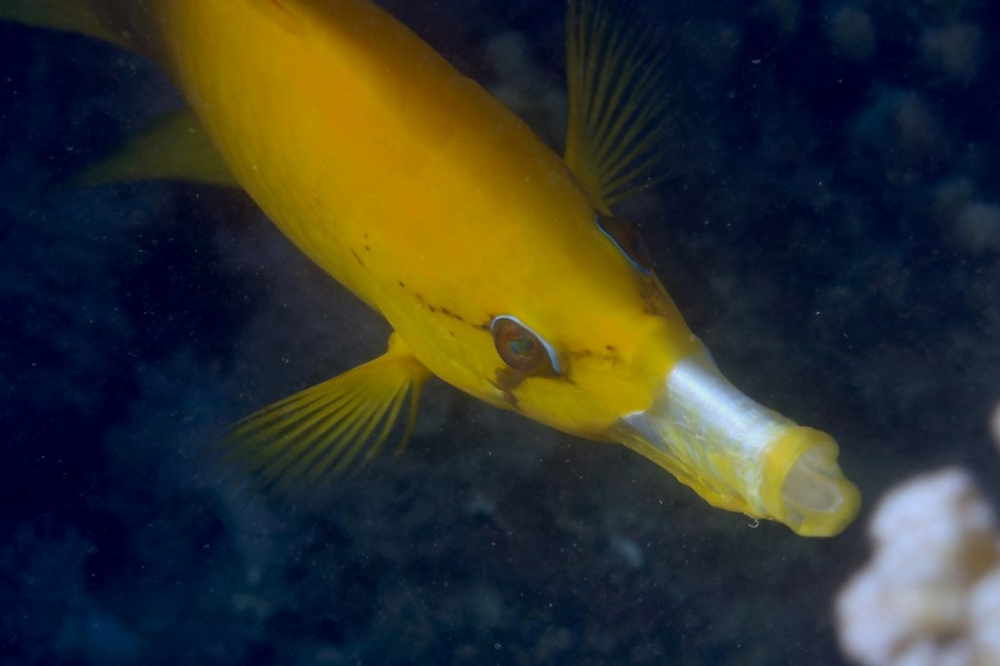
The size of the fish is also not the most remarkable: the largest individuals grow to only 54 centimeters - about the size of an average carp at the market. But the cool thing about these reef fish is not their size or sophisticated sense of style, but their unique oral structure. 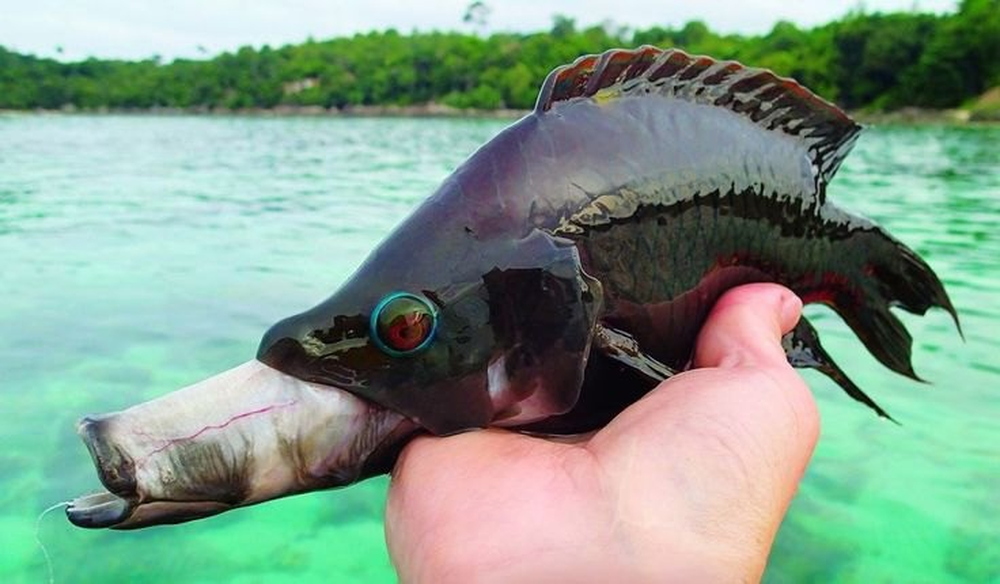
A fish like this could make your jaw drop to the floor.
Thanks to it, wrasses can, at will, extend their jaws forward by as much as 65% of the length of their head in just 0.05 seconds. This is a lot and very fast! No other fish on Earth can do this, but why? That's right, because other fish don't have a four-bar linkage!
And in largemouth wrasses, this stray is an integral part of the mouth. In the process of evolution, the fish's muzzle has turned into a perfectly tuned mechanism for throwing its jaws forward. To do this, the slingers radically changed the entire anatomy of the head and even grew a new ligament for this purpose! 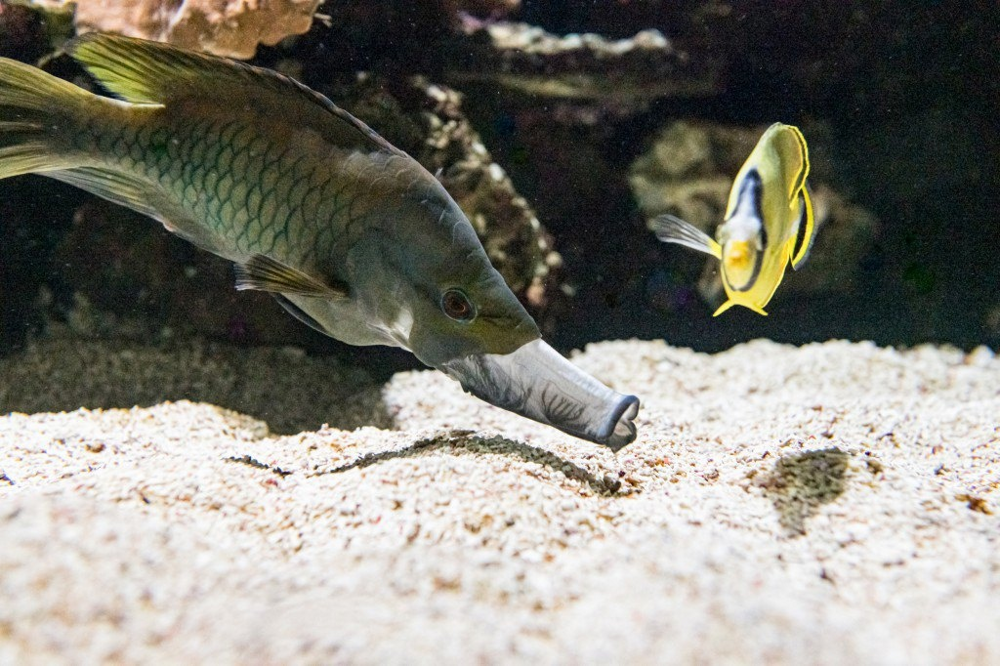
The giant mouth of the largemouth hides behind the frontal bones and gill covers. And when it is necessary to roll out its lip, the fish turns the operculum, which sharply pushes the lower jaw forward. And since both jaws of the fish are tightly connected, they are both thrown out at once. At this time, a small vacuum is formed inside the mouth, which helps to quickly absorb prey. It sounds complicated and time-consuming, but it actually takes less than a second! 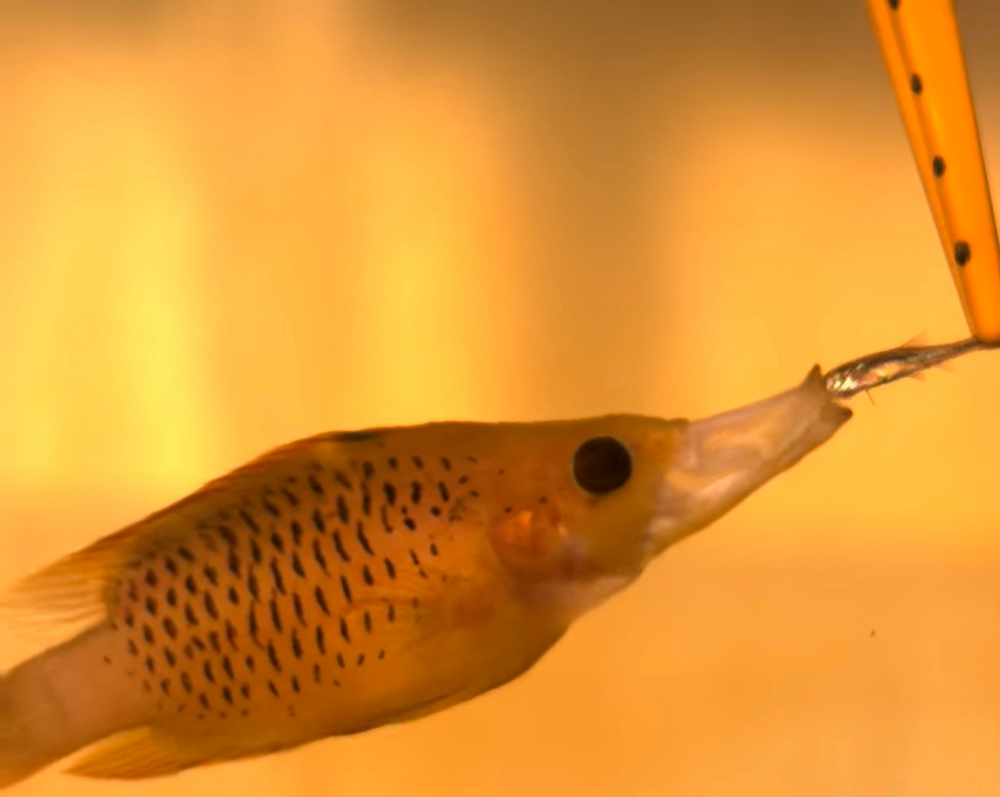
Thanks to such a complex mechanism, largemouth wrasses do not have to spend a long time catching up with their prey and approaching it closely. It seems to crustaceans and fish that the predator is still far away, but as soon as the slingers open their mouths, hop! — the unwary little thing has already fallen into the telescopic mouth of our heroes. 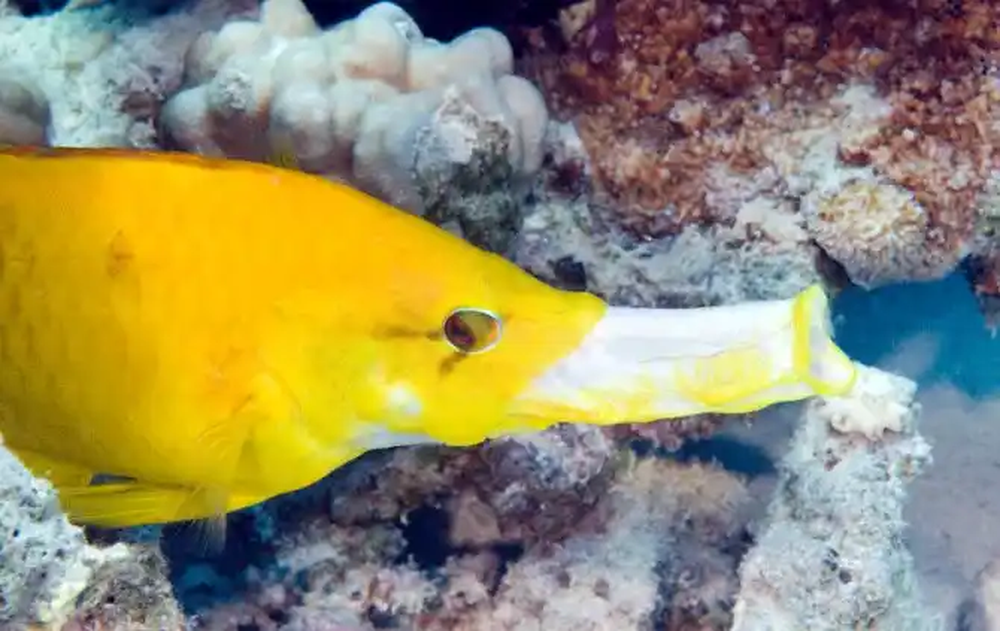
With the help of retractable jaws, wrasses can catch food even in rock crevices and among reefs. After all, they don’t have to swim up to the food with their whole carcass.
This could be the end of the description of the hunting methods of largemouth wrasses, but experienced ichthyologists will immediately find two inconsistencies. First, predators feed on fish and crustaceans, which, as we know, have a strong shell. Secondly, all food is sucked into the mouth using a vacuum, since the retractable jaws do not have powerful teeth for biting and chewing. What happens, fish eat all sorts of little things, not only alive, but also in wrappers?
Not at all! The telescopic mouth is simply a device for capturing prey, and the fish's "real" jaws for chewing food are at the back of the throat! Many species of bony fish have these so-called pharyngeal jaws, and our heroes are no exception. With the help of the second pair of jaws, wrasses crush prey and deftly break shells. That's the whole secret! 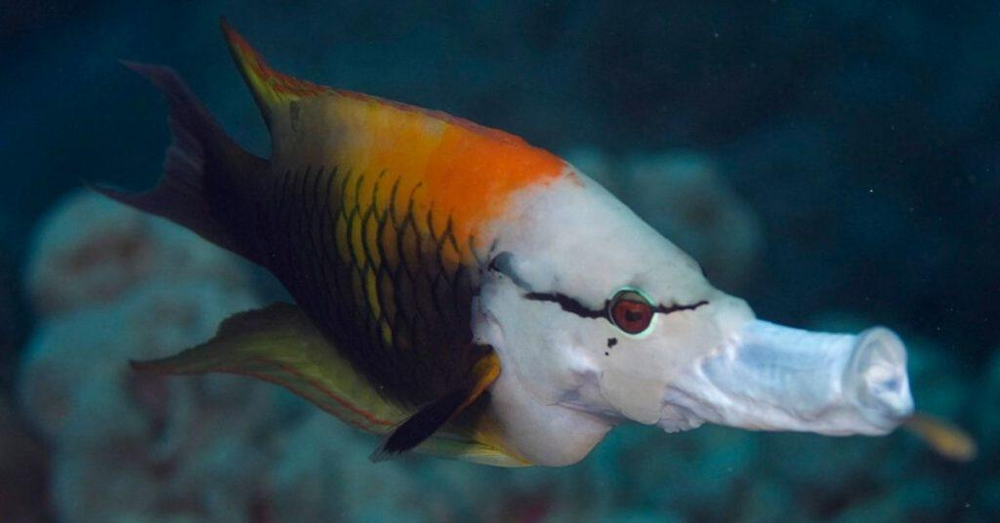
Scientists have successfully solved the nutrition mystery, but they forgot about romance. The mating behavior of wrasse has been studied quite poorly, so there will be little information about film wine in this article. In addition, biologists are still not sure how wrasse solve gender issues. Perhaps they, like most members of their family, are protogynous hermaphrodites. Simply put, fish are born females and some time later turn into males. But when and under the influence of what factors this gender change occurs is unknown. 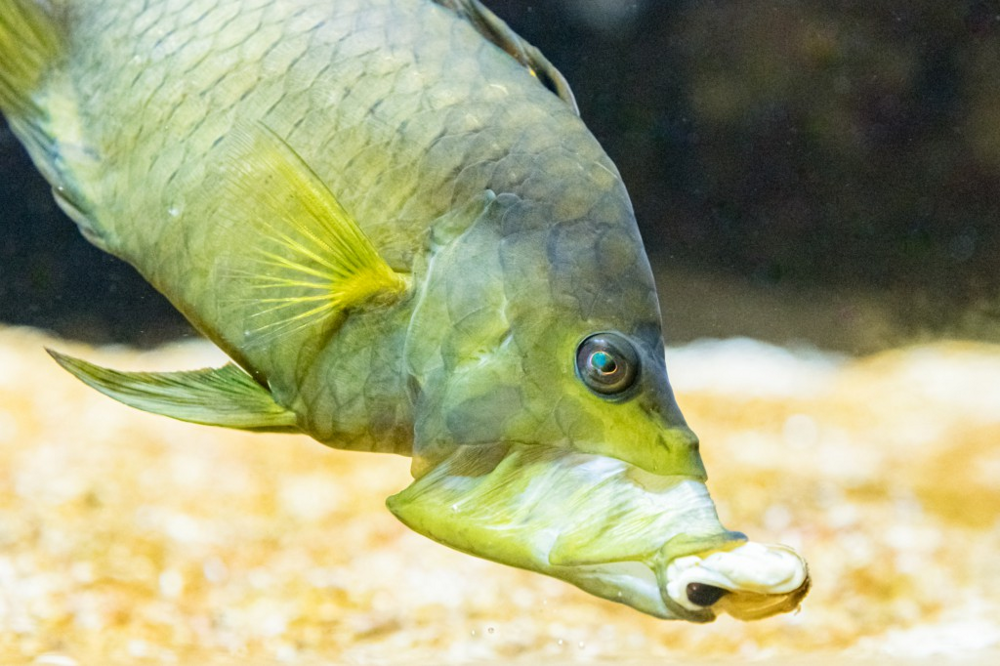
The spawning season for most largemouth wrasse populations begins in early spring, continues throughout the summer, and ends by October. Apparently, saAlthough males court the ladies, swimming around and around, the reproductive process itself is initiated by the females. Usually the alpha dog has plenty to choose from, because several females can live on his personal territory of 500-1000 square meters. 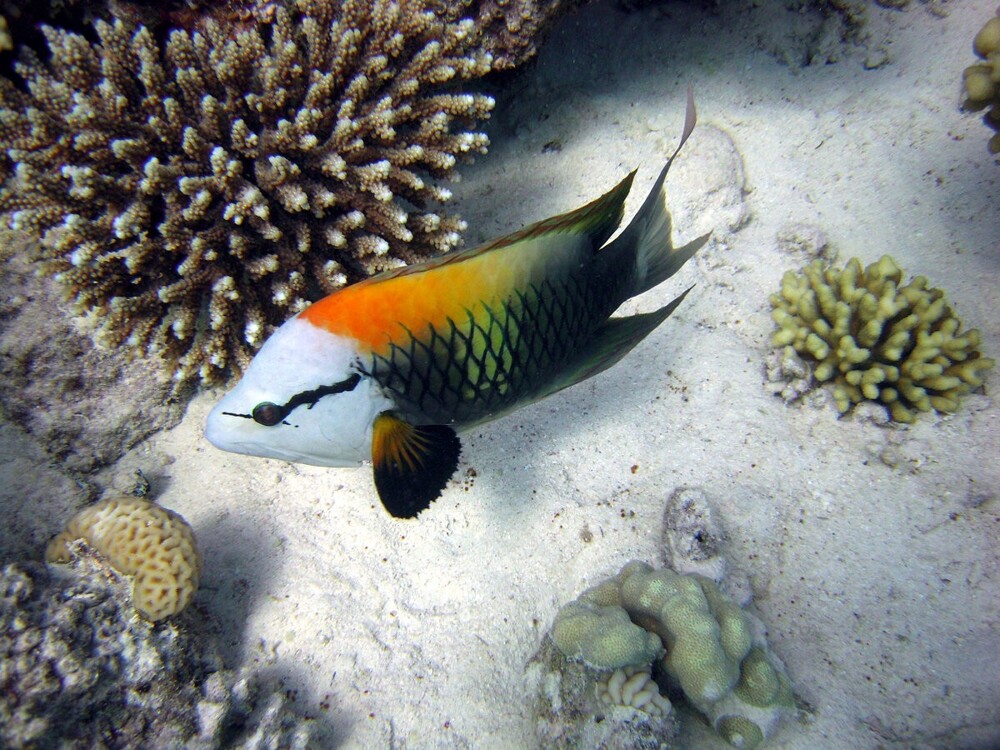
Most often, spawning occurs during high tide, but what happens to the eggs after, and how its development proceeds, is not yet fully understood. However, the fact that today this species of fish is alive, well and not on the verge of extinction speaks for itself. In some parts of their range, largemouth wrasses are caught for the aquarium trade, while in others the fish are served as a table fish. But neither one nor the other so far has any effect on the number of these fish in the world’s oceans.













